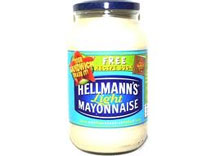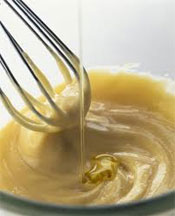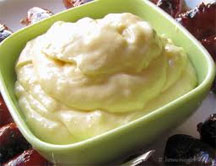Cook'n 101: Making Mayonnaise!
By Alice Osborne
 We are so used to just going to the store to get what we need that sometimes it doesn't occur to us that we can actually make our own things, such as condiments. For instance, mayonnaise. We can make our own, and it's so much better - in taste and in health factors. Consider that when we make our own, all we're using is real food - no chemicals, preservatives, colorings, or other mystery items.
We are so used to just going to the store to get what we need that sometimes it doesn't occur to us that we can actually make our own things, such as condiments. For instance, mayonnaise. We can make our own, and it's so much better - in taste and in health factors. Consider that when we make our own, all we're using is real food - no chemicals, preservatives, colorings, or other mystery items.
Mayonnaise can be made using any type of vegetable oil. The preferred though, would be an oil that is low in saturated fat and ideally one that is high in mono-saturated fat, which would be olive or canola oil. If you want a slightly nutty flavor, you can use walnut or almond oil. The idea though, is to always use the highest quality oil, and to be sure it's not rancid (an easy thing to happen to oils).
 When preparing mayonnaise, always remember to add the oil drop by drop, which gives the emulsification enough time to fully form up. As soon as the mixture begins to become more solid and looks somewhat white, you can then add the oil in a slow, thin, steady stream. Adding the oil too quickly will result in separation.
When preparing mayonnaise, always remember to add the oil drop by drop, which gives the emulsification enough time to fully form up. As soon as the mixture begins to become more solid and looks somewhat white, you can then add the oil in a slow, thin, steady stream. Adding the oil too quickly will result in separation.
If the oil that is being added does cause a separation, the problem can be solved by either adding 1/2 teaspoon of prepared mustard or 1 teaspoon of white vinegar to the mixture. If this doesn't work, try using an egg yolk that has been beaten well. Whisk the egg yolk into the mixture a small amount at a time just until the mixture is emulsified again. The balance of the oil then needs to be added in, again, a small amount at a time.
 Once all the oil has been added to the mayonnaise, flavorings can be added if desired. If you would like a more tart sauce, just add 1 teaspoon of lemon juice. Additional mustard or any other condiment that appeals to your taste can be added. The good rule of thumb is to start slowly, adding small amounts at a time, tasting as you go. Always serve mayonnaise at room temperature for the best flavor.
Once all the oil has been added to the mayonnaise, flavorings can be added if desired. If you would like a more tart sauce, just add 1 teaspoon of lemon juice. Additional mustard or any other condiment that appeals to your taste can be added. The good rule of thumb is to start slowly, adding small amounts at a time, tasting as you go. Always serve mayonnaise at room temperature for the best flavor.
Emulsions, such as mayonnaise, do not freeze well. The water in the product tends to freeze into ice crystals and separates from the oil. This causes the sauce to break up when thawed and it's a real pain in the neck to try to get it back into suspension. You'll run screaming from the building.
Foodies and chefs say that you want to check the weather report before attempting to make mayonnaise. When the humidity is high, mayonnaise tends to come out heavier and greasier than usual. Who knew?
Fresh mayonnaise has a short lifespan. It will only remain fresh for about 3 days under refrigeration. After 3 to 4 days it will start to separate and there is no method to bring it back into an emulsion. Typical processed mayonnaise will stay fresh in the refrigerator after it's opened for about 2 months. Here's a basic fresh recipe in case you'd like to give this a try:
Basic Homemade Mayonnaise
 1 egg yolk (large)
1 egg yolk (large)
1 tsp lemon juice
1 C extra virgin olive oil (cold pressed)
1 tsp quality mustard
1/8 tsp crushed sea salt
1/8 tsp freshly ground black pepper
Combine egg yolks, lemon juice, mustard, salt and pepper in a bowl and whisk. After they are blended, add the oil a few drops at a time, allowing the mixture to thicken and obtain a yellowish-white color. Then continue to add the balance of the oil slowly in a thin stream. If the mixture becomes too thick, add small amount of lemon juice to thin it out.


